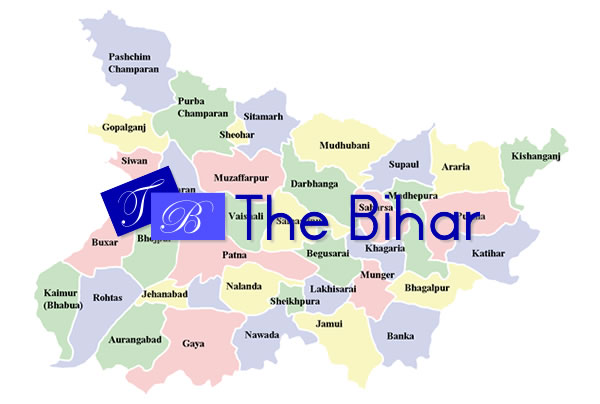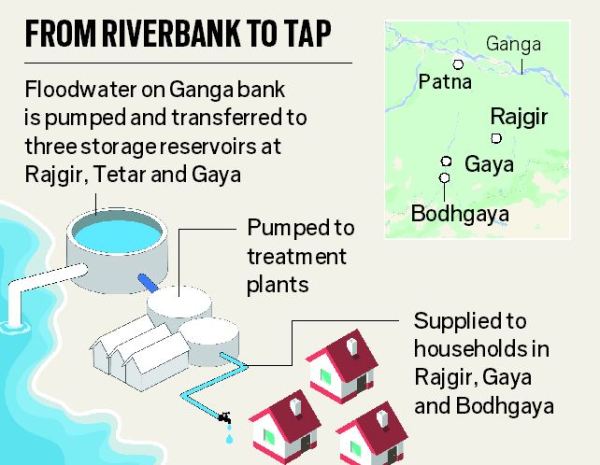Munger
4 min readMunger town is the headquarters of Munger district, in the Indian state of Bihar. Historically, Munger is known for its manufacturing of iron articles such as firearms and swords.
History
Munger is a modern town with historical roots. Previously named Monghyr, this town has many historical sites. During the reign of Nawab Mir Qasim the capital of Bengal had been shifted from Murshidabad to Munger away from British influence. Mir Qasim had been installed by the British East India Company but eventually rebelled against their endless demands, circa 1760-64. Whilst in Munger, Mir Qasim raised an independent army to counter the British. Mir Qasim built a fort, which remains an important tourist destination, beside the Ganges river[citation needed].
Monghyr was a town and district of British India, in the Bhagalpur division of Bengal. The town is on the right bank of the Ganges, and has a railway station, with steam ferry service to the railway on the opposite bank of the river. In 1195 Monghyr, a fortress of great natural strength, appears to have been taken by Muhammad Bin Bakhtiyar Khalji, the first Moslem conqueror of Bengal. Henceforth it is often mentioned by the Mohammedan chroniclers as a place of military importance, and was frequently chosen as the seat of the local government. After 1590, when Akbar established his supremacy over the Afghan chiefs of Bengal, Monghyr was long the headquarters of his general, Todar Mal; and it also figures prominently during the rebellion of Shāh Shujā against his brother, Aurangzeb. In more recent times Nawab Mir Kasim, in his war with the English, selected it as his residence and the centre of his military preparations.
Munger is the place where Karna resided in antiquity. In the Mahabharata, Karna is often referred to as “Angraj” (The King of Ang). In ancient times, Munger was known as Ang[citation needed]. Based on the Mahabharata’s evidence, the kingdom of the Angas roughly corresponded to the region of Bhagalpur and Monghyr in Bihar and parts of Bengal, and later extended to include most of Bengal. According to the Mahabharata, Duryodhana had named Karna the King of Anga.
Sabhaparava of Mahabharata (II.44.9) mentions Anga and Vanga as forming one country. The Katha-Sarit-Sagara also attests that Vitankapur, a city of Anga, was situated on the shores of the sea. Thus the boundaries of Anga may have extended to the sea in the east.
The first railway from Howrah ran through Monghyr: this East Indian Railway line opened to Monghyr in 1861.
After the disastrous earthquake of 1934 the town was rebuilt to give it a modern look, but in keeping with its history.
Geography
Munger is located at 25°23′N 86°28′E25.38°N 86.47°E. It has an average elevation of 43 metres (141 feet).
Munger is situated in a serene location beside the Ganga, considered a holy river, and has many interesting places to visit.
Demographics
As of 2001 India census, Munger had a population of 187,311. Males constitute 54% of the population and females 46%. Munger has an average literacy rate of 64%, higher than the national average of 59.5%: male literacy is 70%, and female literacy is 57%. In Munger, 15% of the population is under 6 years of age.
This modern town has the second highest literacy rate in Bihar state
Economy
Munger is famous for its manufacturing industries of firearms, swords.It is a largest manufaturer of cigerrates in India by Indian Tobaco co.Ltd (ITC Ltd.). These products are abundant, but are noted for cheapness rather than quality. The art of inlaying sword-hilts and other articles with gold and silver affords employment to a few families.
But serenity here has been broken seriously by the gun factory and the illegal trafficking of guns. Lawlessness has become prevalent (sicsic) in recent times. Currently Munger is a relatively unknown area of India though it has produced some known people including Harshvardhan Sinha and Anju Chakraborty, wife of Jeevon Chatterjee, ex-officer of the Indian Army. Sinha’s family is still active in the campaign against gun trafficking.
Future Prospects
Munger will undergo very drastic economic change once the “Ganga Bridge” project is completed in 2007. The price of land may skyrocket, as it will be possible to travel to Patna, the capital city of Bihar, in 1/3 the time than it takes now. A few NGOs have recently taken the responsibility of making Munger a world famous destination. Munger, at present, faces a tough competition from Korba District in terms of foreign capital investment.
Education
Munger District has many good schools and colleges. These include Notre Dame Academy in Jamalpur and Munger, Saraswati Vidya Mandir,DAV Public School,St.Xavier’s School,Kendriya Vidyalaya, Little Angels School, S.K.D. Memorial Public School, New Era etc. are some other household names. The oldest school in the district is the Zila School (formerly Government English School) which was founded in 1854. There are two girls’ schools, Baijnath Girls School and B.R.M. School Madhopur, in Munger town. R.D. & D.J. college, Women’s college, J.R.S. college are institutes for higher education. R.D. & D.J. college is one of the oldest and renowned College in the Bihar and Eastern India Zone. The alumni of these institutes are now working all over world and have brought laurels to the District. Bihar School of Yoga (deemed university) attracts students from all over world. Around 400 Australians, Americans etc. register for the yoga course every year with this figure rising continuously.


